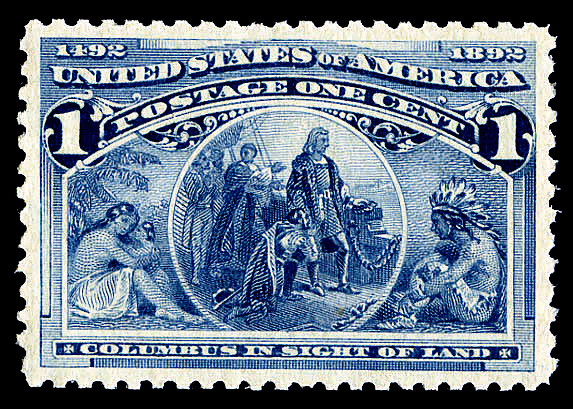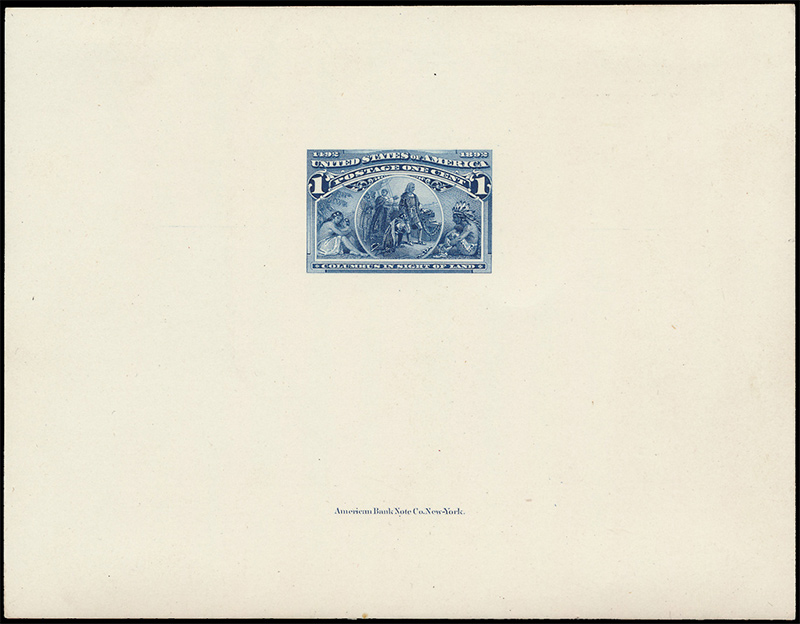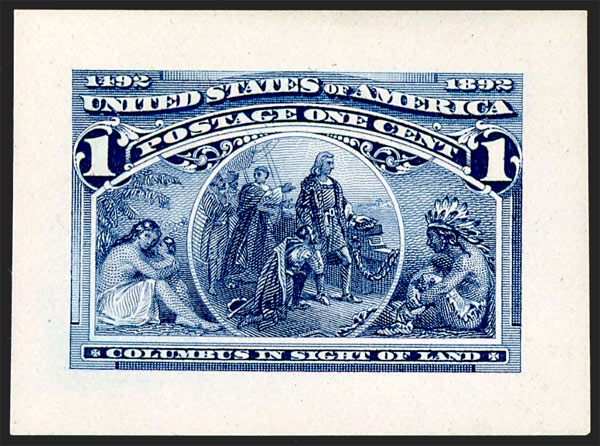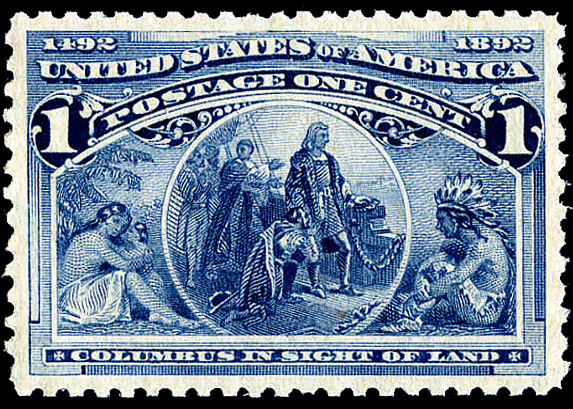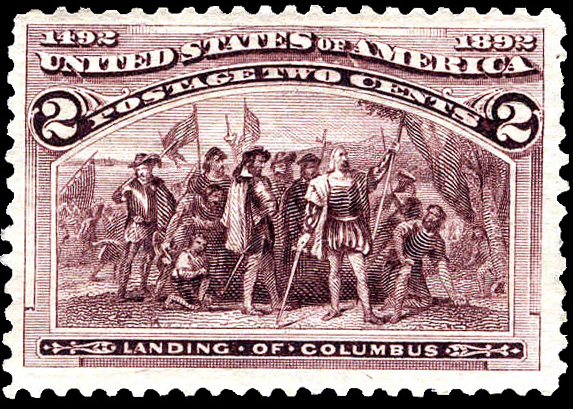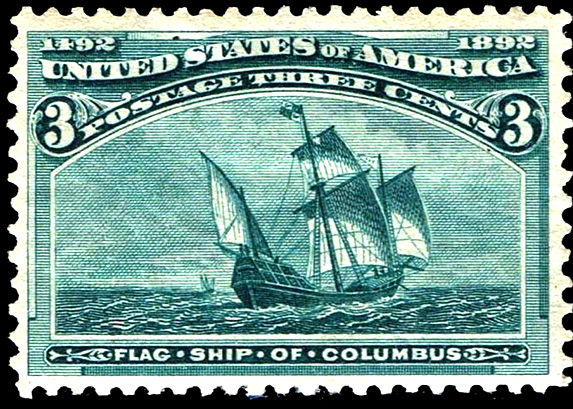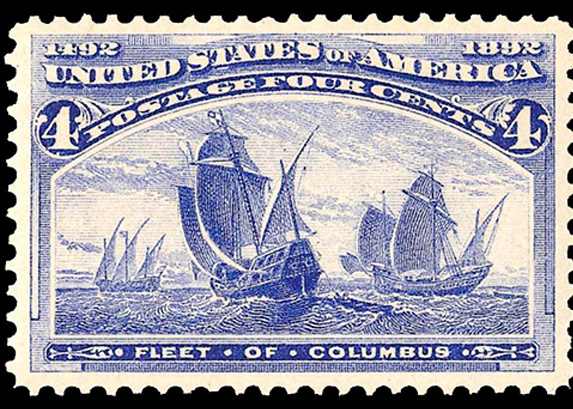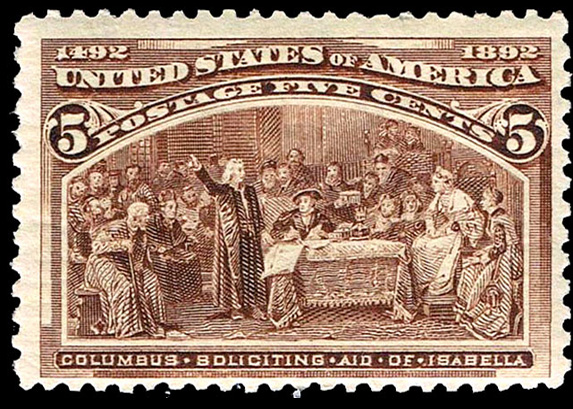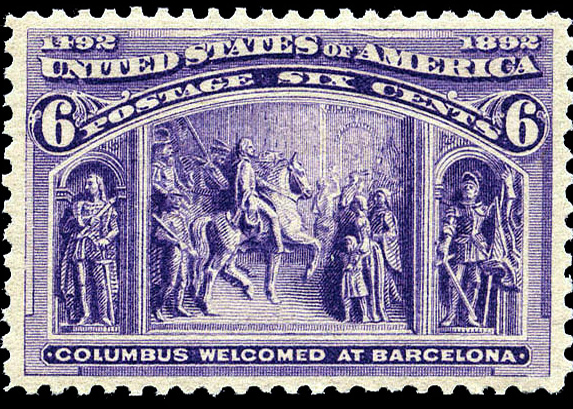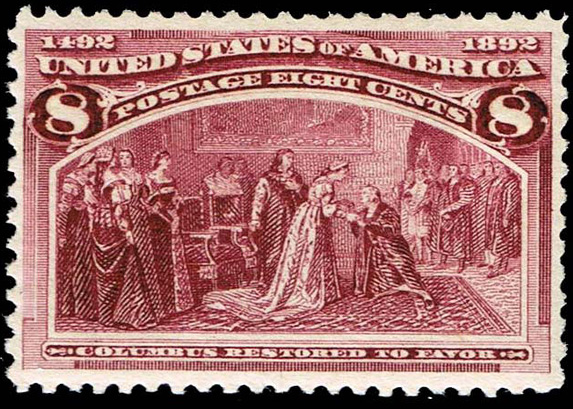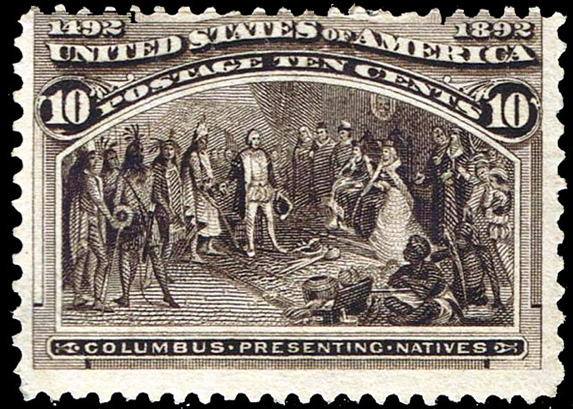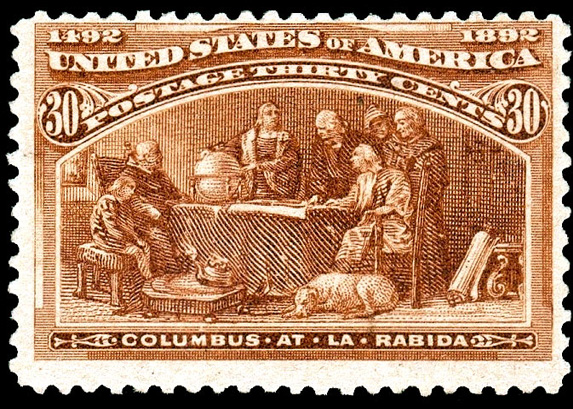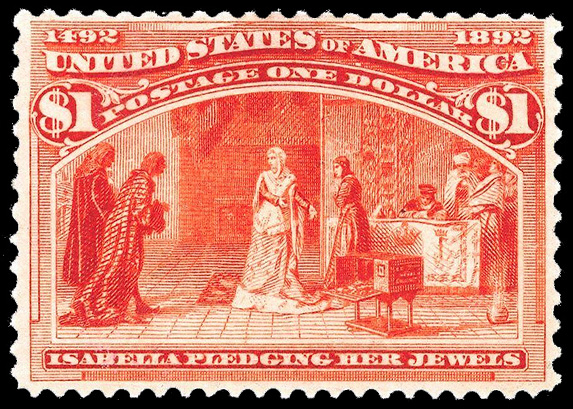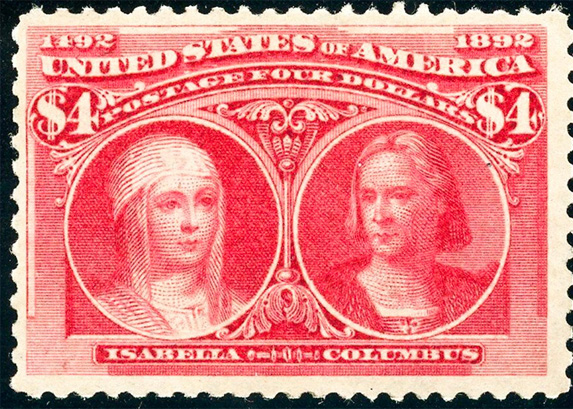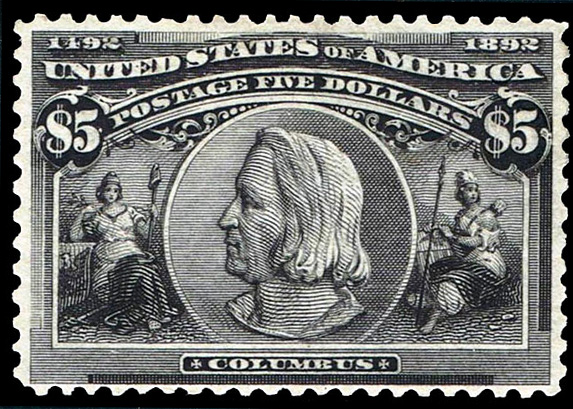Basic Info
1¢
Deep blue, blue, pale blue
Subject: Columbus in Sight of Land
Number issued: 440,195,550
Perforations: 12
Watermark: Unwatermarked
Scott #: 230
Issued:
The 1¢ was officially issued on January, 1st 1893, a Sunday, and at Post Offices the following day. There are a couple of examples postmarked on Saturday, December 31st, 1892
Value
Used
25¢
No postmark with gum (MH)
$2 - $3
Full perfect gum, no postmark
no trace of stamp hinge mark (MNH)
$8 - $22
A full pane
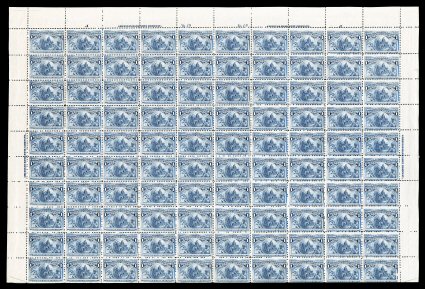
A pane of 100 of #230, there were two panes to a sheet
Earliest date of use
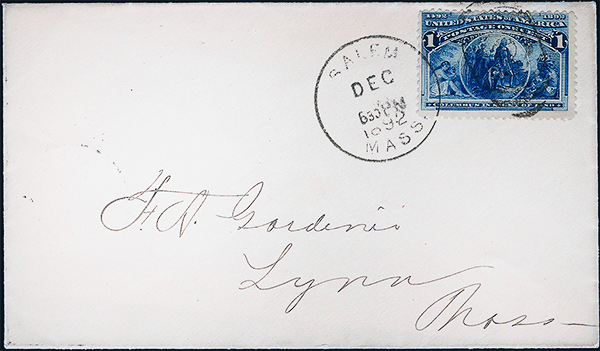
The earliest recorded example, December 31st 1892
Worlds Fair Postcards
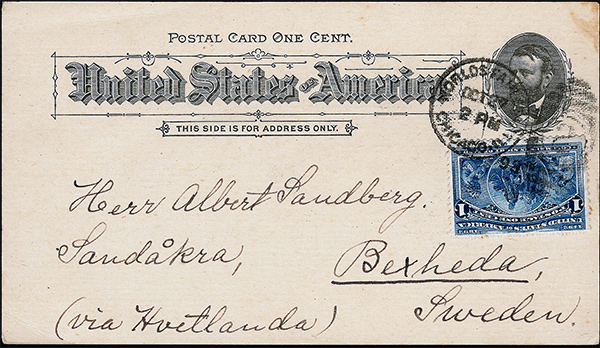
Cards posted from the Expo with the Worlds Fair Exposition have a value in the range of £150-£170
Plate #'s

#230 was issued with the following plate #'s
J46 -50, K51-55, P65-69, MM 149 -153, 00159 -163, VV194- 98
The cracked plate

Listed as a variety in Scotts is the 'cracked plate'. A detail of the crack is shown above.
Inspiration for the Design
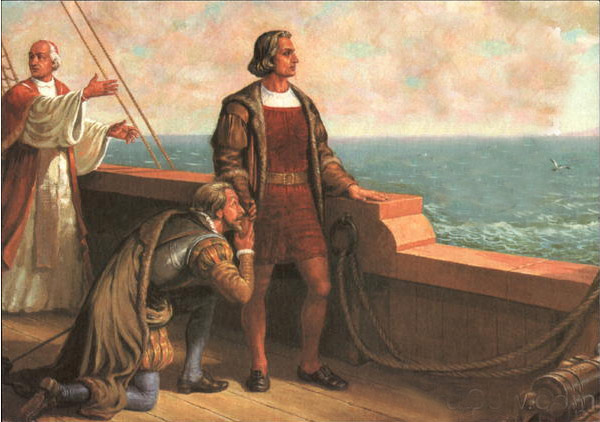
According to legend, disbelievers among the crew were finally convinced that Columbus was divinely inspired and fell to their knees in front of him. This legend was the inspiration of a painting created by George William Henry Powell (1823-1879). In the center of Powell’s painting stands a staunch, controlled Columbus among his elated and reverent men. It is believed that engravers crafted the 1¢ Columbus in Sight of Land stamp from Powell’s work. Of the 16 commemorative stamps issued in 1892 for the Chicago Exposition, this stamp departs the farthest from the original painting.
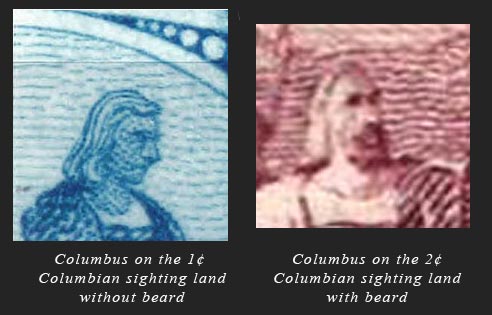
It is worth noting that Columbus is clean shaven whilst sighting land on this stamp, whilst the two cent value depicts Columbus during the landing sporting a full beard. This was the subject of much derision at the time of issue.

The scene of Columbus sighting land was the subject of an engraving was later used by the Bureau for the reverse of the 1914 $5 banknote
Essay's and Proofs
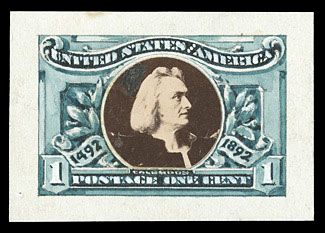
230-E3
Silver print photo vignette mounted inside a watercolor drawing of the frame.
Stiff white paper.
Contributed to Alfred S. Major

230-E3
The story behind the Columbian Issue
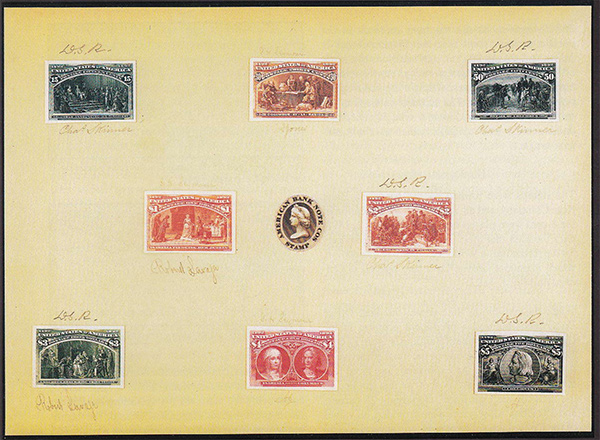
An American Bank Note Company set of proofs mounted on card and signed by the engravers
On the occasion of the 400th anniversary of the Landing of Columbus the largest Exposition ever held on US soil was held in Chicago. The Post Office was determined not to miss out on this and proposed a series of stamps to commemorate the event. The purpose behind this was three fold
1) To encourage the purchase of stamps by the public
2) To stimulate the hobby of stamp collecting
3) To make a tidy profit
It was estimated that 3 Billion stamps would be sold and between September and the end of December 1892 work progressed on their production.

The Post Office's plan of their exhibition space at the Chicago Exposition
At the Exposition the Post Office was in the US Government Building and had been given a vast amount of display space. The display cases showcased stamps from the very earliest days of stamps to 1892 both in the US and around the world. Postal cards were sold in every building and of course one could purchase the new Columbian series stamps.
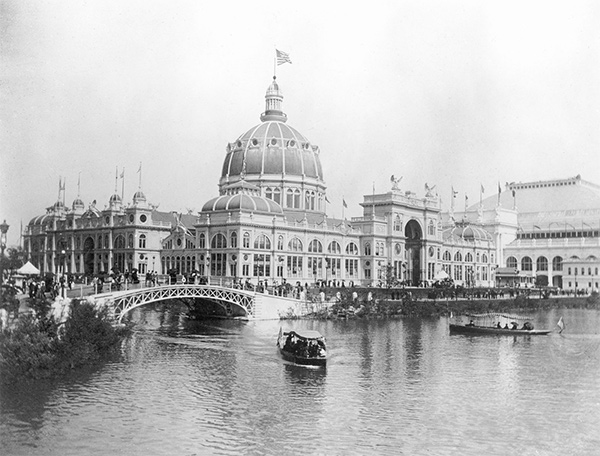
The US Government building at the World's Columbian Exposition
The Post Office Dept. informed all post offices that they would not be able to order the new series on an 'as needed' basis as was the normal procedure. Instead they would be sent an amount the powers to be deemed sufficient. Plus the department would not accept any returns and they would not be issued any other stamps until they had run out the new series. This caused much complaining by the post office owners, complaints were coming in that these stamps were too big, being twice the size of current issue (this was done to accommodate the expansive designs).
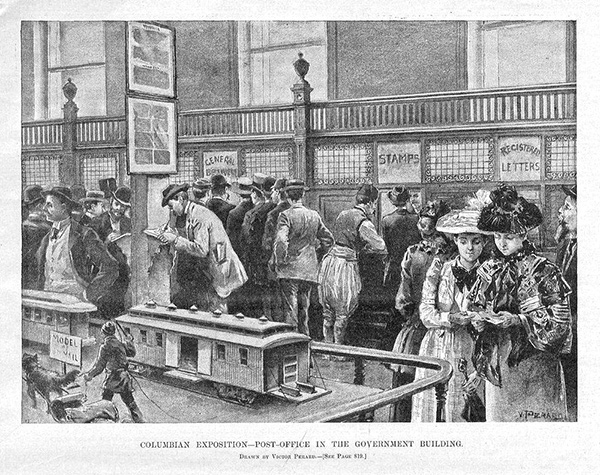
The Post Office display space at the World's Fair
The post offices need not have worried. The stamps proved to be immensely popular. So much so that Post Offices refused to sell the higher values for fear of running out. The price of these skyrocketed as a result. Companies instructed their offices to use the higher values on internal parcels so they could benefit from their sale when delivered to their branch offices. US travellers in Europe were accosted for them, they were even traded on bourses.
And then like all bubbles, it collapsed. Before you knew it the $5 stamps were being sold at a steep discount. Being totally useless for letters, and with a world glut the price dropped like a stone, at one point stamp dealers would only offer 30% of the face value for them.
